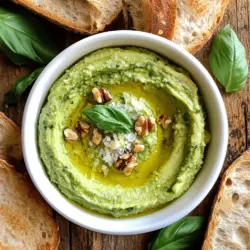
Avocado Basil Pesto
Elevate your meals with this easy and delicious avocado basil pesto recipe! In just 10 minutes, whip up a creamy blend of ripe avocados, fresh basil, walnuts, and Parmesan that’s perfect for pasta, sandwiches, or dipping. This flavorful pesto is not only quick to make but also packed with nutrients. Click through to discover how to make this mouthwatering sauce and bring a burst of freshness to your table!